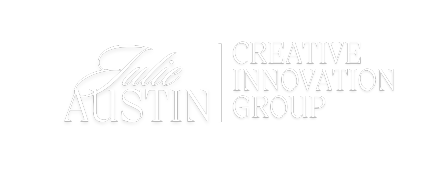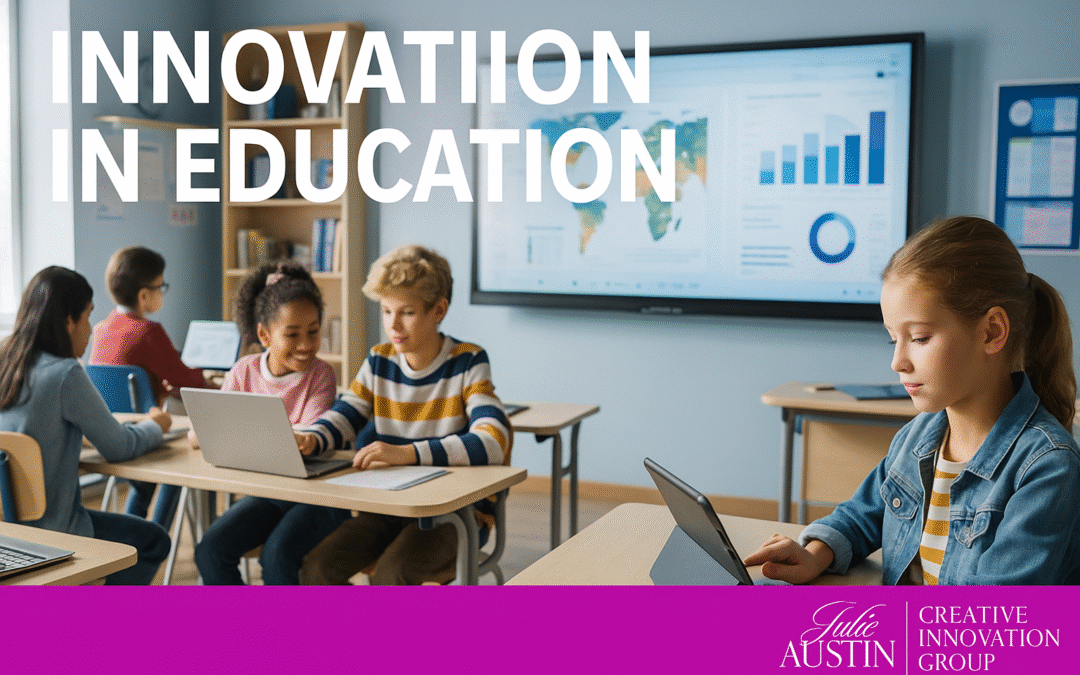Innovation in education is more than a buzzword—it’s a critical survival strategy for schools aiming to equip students for a fast-changing world. From private screenings of documentaries like Waiting for Superman to district-wide workshops in California, educators everywhere are wrestling with how to move from lip service to real, measurable change. In this deep dive, we’ll explore the systemic barriers holding back creativity, highlight trailblazing schools that are rewriting the rules, and lay out a clear roadmap for implementing innovation in any learning environment. Whether you’re a district leader, classroom teacher, or policymaker, you’ll walk away with actionable insights and best practices drawn from on-the-ground success stories.
The Innovation Gap in Education Today
Public discourse around education reform often touts “innovation” as the ultimate solution—only to reveal a yawning gap between rhetoric and reality. At a private screening of Waiting for Superman, teachers in the audience voiced frustrations that remain eerily familiar today: rigid curricula, stifling bureaucracy, and a reluctance to embrace failure. This disconnect isn’t isolated to K–12; corporate teams echo the same concerns. Creativity by its nature defies neat lesson plans and standardized assessments, making it a tough sell in systems built around consistency and risk-aversion.
The Waiting for Superman Moment
Back when I sat in that screening, it became clear that even well-intentioned reformers had underestimated the depth of resistance to change. Teachers confessed they were drowning in compliance mandates, leaving little room for experimentation. A similar dynamic plays out in boardrooms, where “innovative spin” often translates to adding a new app or platform—without rethinking underlying processes. The result? Superficial fixes that do little to transform learning outcomes or organizational culture.
The Bureaucracy Barrier: Why Red Tape Crushes Creativity
Red tape is arguably the strongest adversary of innovation in both education and business. Policies designed to ensure equity and accountability can unintentionally undermine the very creativity they aim to foster. When every choice—from lesson plans to lunch menus—requires sign-off from multiple committees, the agility to pilot new ideas evaporates.
Why Failure Is Underrated in Learning
In traditional models, failure is stigmatized. A single poor test score can sink a student’s GPA or derail a pilot project in an administrative office. But innovation thrives on experimentation—and experimentation inevitably includes missteps. Organizations that celebrate “smart failure” often outpace more risk-averse peers, uncovering breakthrough approaches that would have been impossible under an all-or-nothing mindset.
Leadership’s Pivotal Role in Cultivating Innovation
If innovation is a team sport, leaders are its coaches. Administrators and principals set the tone: by modeling curiosity, granting permission to fail, and actively soliciting bold ideas, they transform staff from passive rule-followers into proactive problem-solvers.
Top-Down, Bottom-Up: Creating Permission to Innovate
Successful districts blend visionary directives with grassroots input. For example, at a business conference for the Rialto Unified School District, I challenged administrators to lead improv and creativity exercises—demonstrating that embracing uncertainty can spark unexpected breakthroughs. When leaders visibly endorse “blue-sky thinking,” teachers and staff feel empowered to pilot radical approaches in their classrooms, from flipped instruction to student-run projects.
Spotlight on Trailblazers: Schools Embracing Innovation
Amid widespread challenges, several schools have cracked the code on practical innovation. These case studies reveal common threads: flexible learning environments, technology integration with clear pedagogical goals, and a culture that values iteration over perfection.
Carpe Diem Schools
The Carpe Diem network reimagines the classroom as a professional workspace. Students learn in individual cubicles, progressing at their own pace through online modules. One student might master sixth-grade math, seventh-grade English, and eighth-grade history—all in the same day. When learners race ahead, they seamlessly transition to the next level; when they stumble, coaches (not traditional teachers) provide targeted support. This adaptive model has led to higher engagement and even allows for early graduation. By decoupling seat time from content mastery, Carpe Diem flips the script on one-size-fits-all schooling.
Clintondale High School
Clintondale in Michigan tackles the homework dilemma by literally “flipping” the system: lectures are assigned as online videos for home review, while homework is completed in school under teacher supervision. This reversal addresses equity gaps—students without adult support at home get the help they need during class. The results are striking: English failure rates dropped by 33%, math by 31%, and science by 22%. This simple structural shift underscores the power of re-examining entrenched routines through an innovation lens.
The Steve Jobs School
In The Netherlands, The Steve Jobs School offers a self-guided, technology-infused learning environment. Every student works on an iPad-driven curriculum, choosing projects aligned with personal interests. Rather than traditional teachers, “coaches” facilitate inquiry, creativity, and problem-solving. Every six weeks, parents meet with coaches to co-design the next phase of each child’s journey. By treating learners as active agents rather than passive recipients, the school cultivates intrinsic motivation and lifelong learning skills.
Waldorf School of the Peninsula
Sometimes innovation means looking backward. In Silicon Valley, many tech executives opt to send their children to Waldorf schools that ban screens in favor of hands-on, arts-based education. Mathematics emerges through knitting and construction projects; language develops through drama and storytelling. By emphasizing social-emotional intelligence, resilience, and imaginative exploration, Waldorf equips students with the soft skills essential for navigating a rapidly evolving world where creativity and empathy matter as much as technical know-how.
Key Takeaways & Best Practices for Educators
Analysis of these trailblazers reveals several universal principles:
Flexible Learning Paths: Break away from age- or grade-based progression. Empower students to move at their own pace, as seen at Carpe Diem and Steve Jobs School.
Strategic Technology Use: Technology should amplify pedagogy—not dictate it. For insights on balancing tech and human connection, visit our Creativity & Innovation Blog.
Flipped & Blended Models: Don’t bind innovation to new tools alone; rethink traditional schedules and spaces. Clintondale’s flipped homework model showcases low-cost, high-impact redesign.
Leadership Commitment: Top-level buy-in and clear signals that failure is safe are foundational. Districts excelling in innovation embed pilot programs within performance metrics.
Cultural Shift: Celebrate experimentation publicly—share wins and “best fails” in staff meetings, newsletters, and on your Press Room.
Leveraging Technology & Partnerships for Growth
While human-centered approaches lie at the heart of innovation, technology and external collaborations can turbocharge impact—if deployed thoughtfully.
Video Tools & Engaging Content
Video platforms enable anytime, anywhere engagement: students review recorded lessons at home, parents access tutorials, and teachers collaborate asynchronously. As Kaltura’s research highlights, “Innovation in education can be: Introducing more technology in the classroom, or providing parents with powerful video tools” (Kaltura Blog). By integrating user-friendly video creation and analytics, schools can personalize support and measure engagement in real time.
Community Collaboration & Social Impact
Innovation flourishes when schools partner with local businesses, nonprofits, and civic groups. Stand Together’s analysis shows that community-driven programs—mentorships, project-based learning partnerships, and service initiatives—fuel student agency and real-world relevance (Stand Together Stories). Embedding authentic challenges encourages students to tackle issues from homelessness to environmental sustainability, strengthening both academic and civic competencies.
Charting the Future: Personalized & Diverse Learning Paths
The next frontier of innovation in education is hyper-personalization. Artificial intelligence, adaptive learning platforms, and data-driven dashboards promise to tailor experiences down to the individual learner. But tech alone isn’t enough: true personalization requires a mosaic of pedagogies, from competency-based mastery models to interdisciplinary projects that blur traditional subject boundaries.
Imagine a student exploring renewable energy through a blend of science labs, community partnerships with local solar installers, and creative storytelling assignments. Or consider schools adopting micro-credentialing, where learners earn digital badges for mastering specific skills—elevating motivation and providing employers with granular evidence of capability. These approaches dovetail with the principles outlined in our Patents & Competitive Advantage primer, where protecting intellectual property goes hand-in-hand with rewarding individual initiative and ingenuity.
How Creative Innovation Group Can Help
At Creative Innovation Group, we specialize in igniting innovation cultures across sectors—education included. Through our tailored keynotes, workshops, and consulting services, we guide leaders and teams to:
Audit current practices and identify systemic barriers to creativity
Design pilot programs rooted in evidence-based frameworks
Train coaches, teachers, and administrators in facilitation techniques that foster psychological safety
Measure impact with custom metrics dashboards and continuous improvement cycles
Curious how we’ve partnered with districts to transform professional learning? Explore our work with dedicated educators on the Keynotes by Julie Austin page and dive into stories of success in our Client Portfolio.
Next Steps for Building Innovative Schools
Innovation in education isn’t a one-time project; it’s an ongoing journey. By dismantling bureaucratic roadblocks, empowering leaders to champion risk-taking, and learning from pioneering schools, any district can move beyond empty talk to tangible transformation. Start by piloting a flipped model in one department, launching a small-scale self-paced cohort, or partnering with a local nonprofit for service-based projects. Document your process, celebrate both wins and lessons learned, and scale what works. The future of learning depends on our willingness to question “the way we’ve always done it” and to craft new pathways where every student can thrive.

